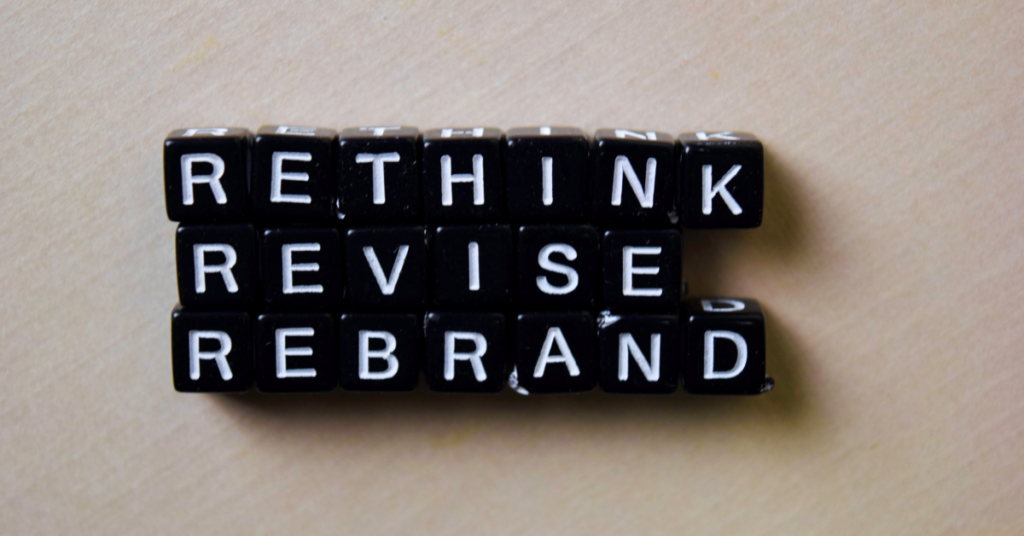How to Rebrand your Business or Product with a New Trade Mark: Tips and Strategies
Guest Blog from Dr Victoria Longshaw and Dr Carolyn Rolls, Houlihan2 Patent and Trade Mark Attorneys
Are you considering rebranding your business or product with a new trade mark? If so, you need to be aware of the legal considerations that come into play. In this article, we provide tips and strategies for rebranding your products successfully. We will also discuss the importance of choosing the right trade mark. Let’s get started!

The pros and cons of rebranding
Any business that has been in operation for a significant amount of time will inevitably go through some changes. As the company evolves, its values and identity may change as well. In some cases, this may lead the business to consider a rebrand. However, any business owner considering a rebrand needs to weigh the potential benefits against the risks.
On the one hand, rebranding can be an effective way to refresh a company’s image, making it seem more modern and relevant. It can help to differentiate a company from its competitors and signal a change in direction. It can also be an opportunity to correct any misperceptions about the business, such as outdated ideas about its products or services. Rebranding provides opportunities to appeal to a new customer base and to reconnect with established clients.
However, there are also some potential drawbacks, such as the risk of alienating existing customers or damaging the company’s reputation. There is always the risk that the new brand will not resonate with consumers and companies that undergo extensive rebranding campaigns may find themselves alienating their loyal customer base. Rebranding can also be expensive and time-consuming.
It is therefore important to carefully weigh the costs and benefits of rebranding before making any decisions.
Your old trade mark – how bad is it?
A trade mark may consist of words or a logo, and optimally they are carefully chosen or designed to appeal to consumers. However, over time, trade mark designs can start to look dated. This can damage the reputation of a brand and make it appear old-fashioned or out-of-touch.
Another problem forms when the reputation you have associated with your trade mark does not cover your new services or products. For example, if you have used the word “tiles” in your trade mark but have now decided to sell floorboards too. In that case, it may be necessary to consider changing your mark. If your current mark is no longer an accurate representation of what you do, it could be holding your business back.
As a result, companies may want to regularly review their trade marks to ensure that they look fresh, up-to-date and stay in the mind of consumers.
The value in your old trade mark
Even if a trade mark is outdated and needs refreshing, it is still a valuable business asset if there is goodwill associated with it. Goodwill is the positive reputation that a business has built up over time. It takes into account factors such as customer loyalty and satisfaction, name recognition, and positive associations. If a trade mark has been used for many years and has significant goodwill associated with it, it is important to ensure that it is not lost. Therefore, when rebranding, businesses need to create a strategy to build on the goodwill that is associated with their old trade mark.
It is worth considering a marketing strategy that includes use of the old trade mark, even if part of a legacy page on a website or a legacy section in a leaflet that accompanies the product. In this way, a business may ensure that it can prove that it is still using the old trade mark in the course of trade in some capacity. This is an important consideration because it means that your business is more likely to be able to retain ownership in the old trade mark. Bear in mind that even if you have decided that you would not like to continue using your old trade mark, your competitors may have other ideas and could use your change in trade mark as an opportunity to benefit from your rebranding.
It is advisable not to discard your legal rights in the old trade mark, even if you are planning to use a new trade mark.
Choosing your new trade mark
Rebranding can be a daunting task, but choosing the right trade mark is an essential part of the process. Trade marks are more than just words or logos – they are designed to create an emotional connection with consumers and convey the values of your brand. When selecting a new trade mark, it is important to consider its visual appeal, but also its meaning and how it will be perceived by your established customers as well as the new customers that you would like to target. One way to do this is by ensuring that the new trade mark has a similar meaning or message to the old one. Another way is to continue using the old trade mark in some capacity, such as for a product line or in a specific market.
In addition, it is important to ensure that the trade mark is distinctive and available for use and registration. A trade mark should be carefully selected that is not descriptive and that is not too similar to that of a competitor. For tips on how to choose a trade mark, have a look at an earlier article here.
With so many factors to consider, it is advisable to seek professional advice when choosing a new trade mark for a rebrand. With careful planning and consideration, choosing a new trade mark for your rebrand can be a successful and exciting part of the process.
Houlihan2 is a Patent and Trade Mark Attorney Firm based in Melbourne, with offices in New Zealand, Singapore and Malaysia. They assist clients in securing and maintaining intellectual property rights including Patents, Trade Marks, Designs and Copyright that align with their business goals.





Leave A Comment